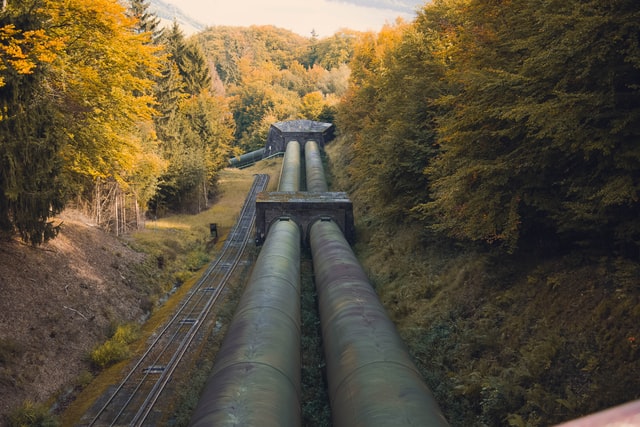The benefits of aerial drone inspections explain the feasibility of drone inspections. Drones rely on camera sensors to inspect hardware facilities for potential defects. So can drones inspect invisible gases?
Let's take a look at optical gas imaging drones!
What is an optical gas imaging drone?
Optical gas imaging (OGI) drones combine advanced infrared (IR) camera technology with unmanned aerial vehicles (UAVs) to detect and visualize gas leaks in a variety of industrial environments.
The technology is particularly useful for identifying and monitoring leaks of hydrocarbon gases, volatile organic compounds (VOCs), and other hazardous gases, providing a safer and more effective alternative to traditional inspection methods.

How do optical gas imaging drones inspect for gas leaks?
Optical gas imaging drones are typically equipped with multiple payloads such as optical gas analyzers, infrared thermal imaging technology, and reporting software to quickly detect high-resolution images of potential leaks and other anomalies in the spectral range of 3.2-3.42 µm wavelengths. In gas enhancement mode (GEM), accurately determine the leak point.
Benefits of using optical gas imaging drones
UAV drone aerial gas inspections bring new detection solutions to environmental monitoring, emergency rescue, emergency response, smart cities and scientific research. While performing efficient inspections, personnel risks are avoided to the greatest extent possible.
- Help environmental protection departments quickly identify pollution sources in industrial and residential areas and understand the transmission characteristics of pollutants;
- Help large industrial enterprises easily obtain distribution maps of air pollution at different heights in the factory area, and monitor the operation of the factory area safely and efficiently;
- Help petrochemical companies analyze the air composition around oil and gas wells, storage tanks and gas pipelines to improve inspection efficiency and safety;
- Help landfills detect odor leakage above the film, find cracks and leaks in time, and improve inspection efficiency and safety;
- Help emergency rescue teams understand the diffusion of toxic and harmful gases in emergencies and define the evacuation range;
- Help scientific research teams collect three-dimensional air pollution distribution data that is difficult to collect by traditional means;
- Help port management departments investigate ships that burn illegal fuel.
Can Autel drones perform gas detection?
Autel infrared thermal imaging drones have EVO II 640T series and EVO MAX series. The drones can identify more obvious smoke, such as when a fire occurs. However, thermal imaging drones do not have corresponding gas sensors and cannot identify gases.
Autel drones support third-party payloads to add gas sensors for gas detection. Sniffer4D Lingxiu is an atmospheric pollution mobile monitoring system that includes hardware and its supporting software. It can be carried on mobile vehicles such as drones and cars. Sniffer4D Mapper software can be used for gas data visualization and analysis.


Application of drone gas detection
Oil and Gas Industry:
- Pipeline Inspections: Regular monitoring of pipelines for leaks to prevent environmental contamination and economic losses.
- Offshore Platforms: Inspections of hard-to-reach areas on offshore oil rigs to ensure safety and compliance.
Chemical Plants:
- VOC Monitoring: Detection of leaks in chemical processing facilities where VOCs are prevalent.
- Compliance and Safety: Ensuring adherence to environmental regulations and maintaining workplace safety.
Utilities:
- Gas Distribution Networks: Regular inspection of urban and rural gas distribution networks to detect and repair leaks promptly.
- Power Plants: Monitoring emissions and leaks in power generation facilities to ensure environmental compliance.
Environmental Monitoring:
- Emission Surveys: Conducting surveys to monitor industrial emissions, contributing to environmental protection efforts.
- Disaster Response: Rapid assessment and monitoring of gas leaks following natural disasters or industrial accidents.
Conclusion
Optical Gas Imaging drones represent a significant advancement in industrial inspection and environmental monitoring. By integrating advanced IR camera technology with the mobility of UAV drones, these systems enhance safety, accuracy, and efficiency in detecting and managing gas leaks across various sectors.








